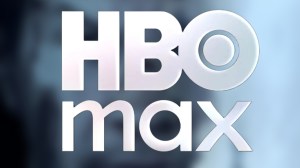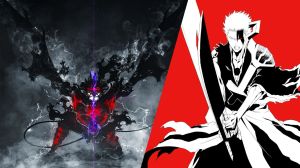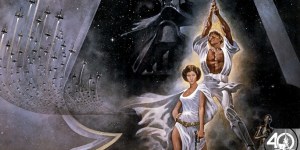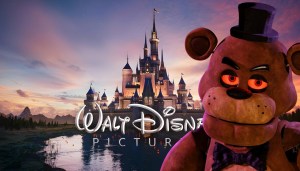Between films like Thirteen, The Lords of Dogtown, and Red Riding Hood, filmmaker Catherine Hardwicke established early on in her career that she could take stories that focused on teenage characters and treat both the story and audiences with the respect and maturity they deserved. Her most well-known work, Twilight, debuted in 2008 and caused a seismic shift across all of pop culture. Spooky stories of love-lorn vampires weren’t an entirely new concept, but her depictions of Edward Cullen and Bella Swan’s romance captured the hearts of millions worldwide, leading to the film franchise becoming one of the biggest sensations in subsequent years.
Videos by ComicBook.com
In Hardwicke’s latest film, Miss Bala, “Gloria (Gina Rodriguez), drives to Tijuana, Mexico to visit her best friend who is competing in the local ‘Miss Baja’ beauty pageant. During a night out, her friend is abducted and Gloria finds herself a pawn in a dangerous game being played by the CIA, the DEA, and a charismatic yet ruthless cartel kingpin. Finding power she never knew she had, Gloria plays one organization against the other, as she seeks to rescue her friend. Surviving will require all of her cunning, inventiveness, and strength.”
ComicBook.com recently chatted with Hardwicke about her approach to the film, the magic she captured with Twilight, and what to expect from the upcoming The Lost Boys TV series, which she directed the pilot of.

ComicBook.com: You have amassed a number of more genre-centric films to your name, so what drew you to the more action-driven Miss Bala? Did you have a connection to the original 2011 film?
Catherine Hardwicke: I wasn’t familiar with the original film, but I immediately knew this was like a reinvention, a young Mexican writer wrote this, updated the world and everything, and also updated the mentality about women from the original film because, of course, the original film, she’s extremely passive, and in our case, Gina Rodriguez is playing a character that’s really actively trying to figure out a strategy to get out, to save her friend, and survive this crazy, escalating ordeal. So I liked that idea.
I loved the idea of an ordinary person being thrown into peril, and what would you do to survive? What would I do if this happened to me? And many crazy things actually similar to this film have happened to me, so I love that you’re testing your own courage, your own wits, your own skills. And then I also love Mexico. I grew up on the Mexican border, literally on the border that our farm is right on the Rio Grande River. And I swam across the river many times, illegally entered Mexico, ran around over there and swam back. So I’ve done the opposite border crossing, but I love the culture.
I went to art school there. I studied architecture. I’ve done a million trips into Mexico, and love the vibrancy of the culture, and the art. So I thought, “Oh, this is a great idea, a great chance to show a border town in a way that we usually don’t see it.” So we incorporated the modern architecture, the murals, the local music, and all kinds of cool stuff that’s happening actually culturally in Mexico. Tried to show all that.
So when you say similar things have happened to you, is this your admission that you’re part of the Mexican drug cartel?
Whoa. I like that. Well, actually–no. I have had a gun pulled on me, a gun pointed right at my head. My life threatened. I’ve been in many life-threatening situations, so I have felt that rush of adrenaline and fear, and what do I do to get out of this and survive? Obviously, I’ve survived, but I think it’s something that goes all the way back. I read all this interesting writing by Ambrose Bierce from the Civil War, and he talked about the people who sometimes want to go to war just to test themselves. Take yourself out of your ordinary circumstances and see if you do have the courage to survive, or would you turn chicken? Or as he wrote, would you turn yellow when facing muskets?
So I think when we go see an action movie, what would I do if that happened to me? If I was kidnapped, if I was part of this cartel, if I had to figure this out? So I love all those high stakes, exciting things. I thought it would be a really fun project to do, and action. I love action, too. We got to do the big, fun action sequences at the bull ring, and just telling this story about a cultural hot spot right now, the Mexican border, and finding you have two characters, the two lead characters, don’t feel like they fit into either side of the border. Even as they say in the movie, “I’m too Mexican to be gringo, and too gringo to be Mexican.” So how do you find your identity in this world that’s very confusing? Border politics are, obviously, a giant issue right now.
Which brings up a good point, in that there are parts of the American political climate that are painting a very specific portrait of all people from Mexico. How did you balance the depicting the criminal actions of the characters with delivering a more genuine reflection of the country?
You have an inherently difficult situation, because it is a story about a cartel, and loosely based on a true story about a kidnapping, so that’s already baked into the story, and you don’t want to feed into that stereotype. So part of it was to try to keep the life of the culture and the people as vibrant as possible. Showing the beautiful cultural center there that’s designed by one of Mexico’s leading architects. He also designed the Museum of Anthropology. That’s where you see the beauty contest at. Seeing the other bits of the life of the city woven into the texture of the film in a positive way, that was important.
Also, just representing Suzu’s character, and her little brother, the bilingual nature, the intelligence of the characters. Everything we could do to make it a rounded, nuanced picture.
Going back to an earlier point in your career, it’s hard to overstate the impact Twilight had on all of pop culture. Looking back to that film, you obviously couldn’t have predicted the reaction, but can you now identify what it was that you thought the film accomplished that sparked this cultural embrace of the story?
Since I was involved in it from the very beginning when it was rejected by every studio, and it was put in turnaround from Paramount, and nobody wanted to make the movie because they thought it wouldn’t make any money. I was given the example Sisterhood of the Traveling Pants was a very popular book, but it topped out at, I think it was like $29 to $30 million. So is there an audience for this? There probably isn’t. That was the wisdom of every smart studio executive in town that turned it down.
The only people that were interested in it were this upstart company, Summit, who was a foreign sales company that was trying to make some original content, and even they gave me five different scripts. “Do you think any of these are good? Would you want to work on any of these projects?” And I took the script, read it, went into the Twilight meeting. I said, “First of all, this script needs to be thrown into the trash. I read the book, and we need to make it more like the book, which is the spirit of the yearning, and the ecstatic feeling of being in love for the first time.” So it’s this huge, wish fulfillment, super romantic thing.
And the perfect storm happened, I think, because I was watching it all happen. Stephanie Meyer, the writer, kept writing another book, and she was very engaged with her fan base, still is, with sharing her music playlist, and everything she was doing, and really active. Then publishing another book, and at the same time that we announced that we’re doing Twilight. We put the cast out there, and the photos. That got people more excited. So everything that we did, everything she did, just started fueling this fire. And the genius marketing campaign by Nancy Kirkpatrick, and it just grew, and grew, and grew into shocking, worldwide phenomenon.
I look back at it and I think at the time, if anyone had seen what it could’ve been, obviously all the other studios would’ve wanted to do it. The real studios. And they wouldn’t have ever hired a woman if they thought they had this dynamite on their hands. So I guess I got lucky in that case. Mine was more like I got to treat it more like an indie film, and just make it very personal. Shooting some of it with the handheld technique, and casting all unknown actors, so you just believed that they were the characters. Or almost unknown actors. They’d all, of course, had nice parts in good movies, and they were all very good, but you just believe this is Edward and Bella.
You’ve returned to a similar genre with the upcoming The Lost Boys TV series. Is there anything you can tell us about what to expect from the adaptation?
Well, I don’t want to get in trouble, the CW police come to my house right now or anything, because it does have a lot of neat, surprising twists in it. Really cool layers that the writer, Heather Mitchell, who’s from Shondaland, by the way, has layered in and updated it. Of course, The Lost Boys was so fun, but it was very white, so we have a much more diverse cast, much more reflective of society, shall we say? Really interesting new faces. And we do have Laddie there. We have a fun little Laddie, and we have a lot of cool stuff. Visually, it’s quite stunning. I can’t wait. Fingers crossed. I think you’ll like it.
We’ve already heard that the Frog Brothers will be the Frog Sisters, so that’s one change we’re looking forward to, seeing more female characters.
Yes, more women. Oh, the two Frog Sisters are like the most fun characters you have ever seen, and hilarious. Really kind of awesome. They’re so lovable, and funny, and wicked. I love them.
*****
Miss Bala is out now on Blu-ray, DVD, and Digital HD.








